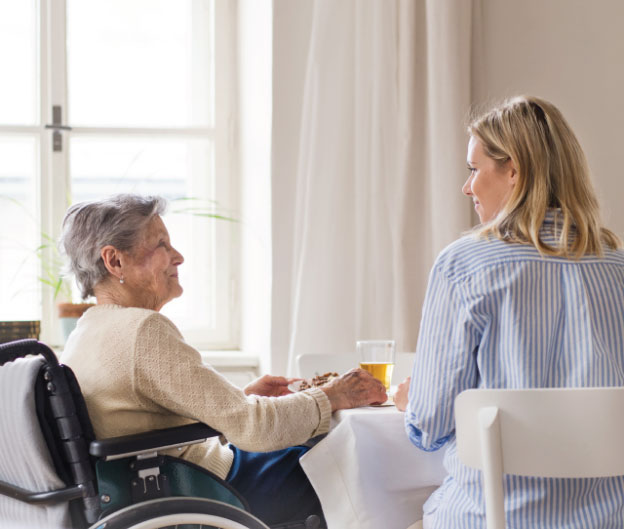Domestic Violence Figures Australia: Alarming Trends
Domestic violence figures in Australia reveal a concerning reality that affects thousands of lives each year. Recent data shows that one in six women and one in sixteen men have experienced physical or sexual violence by a current or former partner since age 15. These figures represent not just numbers, but real people facing real challenges in communities across the nation.
The impact of domestic violence extends far beyond individual households, affecting various groups differently and creating ripple effects throughout society. This comprehensive analysis examines the prevalence of domestic abuse in Australia, its effects on vulnerable populations, the significant consequences for survivors, and the available support services. Understanding these statistics helps identify patterns, improve response strategies, and strengthen support systems for those affected by domestic violence.
Prevalence of Domestic Violence in Australia
Recent national surveys reveal alarming trends in domestic violence across Australia, painting a comprehensive picture of this pervasive social issue. The statistics demonstrate the scale and severity of domestic violence, affecting millions of Australians across different demographics and regions.
Overall statistics on domestic violence
An estimated 4.2 million Australian adults (21%) have experienced partner violence or abuse since the age of 15. The prevalence of domestic violence remains consistently high, with approximately 2.2 million Australians having experienced physical or sexual violence from a current or previous partner. Police records show 25,000 sexual assaults, though many incidents go unreported, suggesting the actual figures may be significantly higher.
Key prevalence indicators show:
- Two in five women (39%) have experienced violence since age 15
- One in two women (53%) has experienced sexual harassment in their lifetime
- Violence affects all communities and cultures, though its nature and prevalence vary among different population groups
- Approximately 2.5 million Australian adults (13%) experienced abuse during their childhood
Gender differences in experiences of violence
The data reveals significant gender disparities in domestic violence experiences. Men are predominantly the perpetrators, with 75% of victims reporting male perpetrators and 25% reporting female perpetrators.
| Type of Violence | Women | Men |
|---|---|---|
| Partner Violence | 17% | 5.5% |
| Emotional Abuse | 23% | 14% |
| Economic Abuse | 16% | 7.8% |
Rates of intimate partner violence
Intimate partner violence statistics show concerning patterns across Australia. One in four women (23%) has experienced physical and/or sexual violence from an intimate partner, compared to one in fourteen men (7.3%). The 12-month prevalence rate of cohabiting partner violence for women decreased from 1.7% in 2016 to 0.9% in 2021-22, driven primarily by a reduction in physical violence.
The severity of intimate partner violence is particularly evident in homicide statistics. On average, one woman is killed every nine days by a current or former partner, while for men, this occurs approximately once per month. In 2019-20, there were 45 intimate partner homicides, with 80% of victims being female.
Recent studies indicate changing public perceptions, with 41% of respondents believing domestic violence is equally committed by both men and women, despite evidence showing men as primary perpetrators. This misconception highlights the need for continued education and awareness about the gendered nature of domestic violence in Australia.
Impact on Vulnerable Groups
Vulnerable groups in Australia face heightened risks and unique challenges when experiencing domestic violence, with statistics revealing particularly concerning trends among specific populations. Understanding these disparities is crucial for developing targeted support and prevention strategies.
Aboriginal and Torres Strait Islander women
Aboriginal and Torres Strait Islander women experience domestic violence at significantly higher rates than non-Indigenous women. Statistics show they are 32 times more likely to be hospitalised due to family violence-related assaults and 31 times more likely to be hospitalised for domestic violence-related incidents than non-Indigenous women.
Recent data reveals:
- Three in five Aboriginal and Torres Strait Islander women have experienced physical or sexual violence by a male intimate partner
- Violence affects 74% of Indigenous victims when perpetrators are under the influence of alcohol or substances
- Out-of-home care rates for Aboriginal children are ten times higher than the general population
Women with disabilities
Women with disabilities face increased vulnerability to domestic violence, with statistics showing multiple forms of abuse occurring at higher rates than in the general population. Research indicates that women with disabilities are almost twice as likely to experience physical or sexual violence by a cohabiting partner over a 12-month period (2.5% compared to 1.3%).
Key impacts on women with disabilities include:
- Higher rates of emotional abuse (6.3% versus 4.1% for women without disabilities)
- Increased risk for women with intellectual disabilities (three times more likely to experience violence)
- Additional forms of abuse, including forced sterilisation and restrictive practises
- Extended periods of violence due to dependency on caregivers
Children exposed to domestic violence
The impact of domestic violence on children presents significant concerns in Australian households. One in six women and one in nine men experience physical or sexual abuse before the age of 15, highlighting the intergenerational nature of domestic violence.
Children exposed to domestic violence often experience:
- Behavioural problems, particularly evident in children aged 1-3 years
- Higher rates of emotional difficulties by age 4
- Disrupted schooling and peer relationships
- Increased likelihood of requiring mental health services
Research indicates that approximately 418,000 women and 92,200 men who experienced violence from previous partners reported that children in their care witnessed the violence. This exposure significantly impacts children’s development, with studies showing that 67% of children exposed to domestic violence face developmental and adjustment challenges.
The statistics underscore the critical need for specialised support services and targeted interventions for these vulnerable groups. The intersection of multiple risk factors – including disability, cultural background, and age – creates complex challenges that require comprehensive and culturally sensitive responses from support services and policy makers
Consequences of Domestic Violence
The long-term consequences of domestic violence in Australia extend far beyond immediate physical harm, creating profound impacts across health, economic, and social dimensions. Recent statistics reveal the devastating ripple effects that continue to shape survivors’ lives long after the violence ends.
Physical and mental health impacts
The health consequences of domestic violence represent a significant public health crisis in Australia. 77% of survivors experience anxiety disorders, while 52% develop mood disorders, highlighting the severe psychological toll. Mental health statistics show:
- 56% of survivors develop post-traumatic stress disorder
- 47% face substance use disorders
- 35% attempt suicide during their lifetime
- 62.6% of women report at least one PTSD symptom
Physical health impacts are equally concerning, with domestic violence being the leading contributor to death, disability, and illness in Australian women aged 18-44. The health system bears an estimated burden of AUD 2.16 billion annually, reflecting increased demand for hospital services and long-term care requirements.
Economic costs
The financial impact of domestic violence creates a substantial burden on both individuals and society. Recent analysis reveals the following cost distribution:
| Cost Category | Annual Impact (AUD) |
|---|---|
| Pain and suffering | 16.01 billion |
| Health system | 2.16 billion |
| Production and business | 2.93 billion |
| Second generation | 512.66 million |
| Justice and services | 2.62 billion |
Women leaving violent relationships face significantly higher rates of poverty, with 37% of single mothers who have experienced violence living below the poverty line. Their income recovery is notably slower, showing only a 20% increase in wages compared to 45% for those leaving non-violent relationships.
Homelessness and housing instability
Housing insecurity emerges as a critical consequence of domestic violence, with 45% of all women seeking homelessness assistance citing domestic violence as the primary cause. Recent trends show:
In 2022-23, homelessness services assisted 58,589 women and 37,825 children fleeing domestic violence. Of these, 27,975 individuals faced various forms of homelessness, including:
- 2,428 sleeping rough or in cars
- 17,954 in temporary accommodation
- 7,214 experiencing couch surfing
The lack of affordable housing creates a significant barrier for escape, with over 20,000 women reporting inability to leave violent situations due to financial constraints. This housing crisis has worsened over the past decade, with the number of women and children sleeping rough or in cars more than doubling from 1,041 to 2,428.
Responses and Support Services
Australia’s comprehensive support network for domestic violence survivors encompasses various services, from emergency response to long-term assistance. Understanding these support systems is crucial for both survivors and those helping them access vital services.
Police responses and reporting rates
Law enforcement data reveals significant underreporting of
domestic violence incidents across Australia. Of the 173,300 women who have
experienced violence by their current partner, 79% have never reported to
the police. Similarly, 73% of male victims who experienced
violence from previous partners never contacted authorities.
Among those who do report:
- Only 34% of cases result in charges against the perpetrator
- 88% of charged cases proceed to court
- 20% of victims obtain restraining orders against violent partners
A concerning trend shows that of those who secured
restraining orders, 47% experienced further violence despite
legal protection. This highlights the complex challenges in law enforcement
responses and the need for comprehensive support beyond initial reporting.
Specialist homelessness services
Specialist homelessness services play a vital role in supporting domestic violence survivors. In 2022-23, these services provided critical assistance to individuals fleeing violent situations:
| Service Category | Number of People Assisted |
|---|---|
| Women | 58,589 |
| Children | 37,825 |
| Crisis Accommodation | 17,954 |
| Emergency Housing | 27,975 |
Currently, homelessness services face overwhelming demand, turning away approximately 295 people daily. This represents 108,000 unassisted requests in 2022-23, marking a concerning increase of 2,400 cases from the previous year. 80% of those turned away are women and children seeking escape from violent situations.
Helplines and counselling services
Australia maintains a network of 24/7 support services providing immediate assistance to those affected by domestic violence. 1800RESPECT, the national counselling service, offers round-the-clock support through trained professionals who provided assistance to over 286,000 people in the past year.
Key support services include:
Emergency Services
- Triple Zero (000) – For immediate danger
- Police Assistance Line (131 444) – Non-emergency police reporting
24/7 National Support Lines
- 1800RESPECT (1800 737 732) – National sexual assault and domestic violence counselling
- Lifeline (13 11 14) – Crisis support and suicide prevention
- MensLine Australia (1300 789 978) – Support for men dealing with family difficulties
- Kids Helpline (1800 55 1800) – Support for young people aged 5-25
Specialist services are available for specific communities, including Aboriginal and Torres Strait Islander peoples, culturally diverse communities, and LGBTQ+ individuals. The DVConnect Womensline provides confidential support and crisis accommodation assistance, while DVConnect Mensline offers counselling services for men affected by or using violence.
Recent service improvements include the introduction of SMS assistance for hearing-impaired individuals and the development of safety apps like Daisy, which helps users find local support services while protecting their privacy. These technological advances have made support more accessible, with 93% of service workers reporting increased demand for digital support options.
The financial investment in support services continues to grow, with an estimated additional AUD 692.79 million needed to meet current demand. This funding would help address the critical shortage in crisis accommodation and expand counselling services to meet the increasing needs of survivors seeking assistance.
Conclusion – Domestic Violence Figures Australia
Australian domestic violence statistics paint a sobering picture of a widespread social issue affecting millions of lives. Data reveals the disproportionate impact on women, with one in six experiencing physical or sexual violence from partners, while vulnerable groups face even greater risks. These patterns create rippling effects through society, manifesting as severe health consequences, economic hardship exceeding AUD 24 billion annually, and housing instability that forces thousands into homelessness each year.
Support services across Australia work tirelessly to address this crisis, yet significant challenges remain. Current response systems face overwhelming demand, turning away hundreds of people daily, while police reporting rates stay concerningly low. These statistics underscore the critical need for expanded support services, increased funding, and stronger prevention strategies to protect vulnerable Australians and break the cycle of domestic violence. The data compels society to acknowledge this crisis and strengthen its commitment to creating safer communities for all citizens.
References for Domestic Violence Figures Australia
[1] – https://www.aic.gov.au/sites/default/files/2020-05/rip07.pdf
[2] – https://www.anrows.org.au/publication/violence-against-women-accurate-use-of-key-statistics/read/
[3] – https://www.anrows.org.au/media-releases/attitudes-matter-ncas21-media-release/
[4] – https://www.vic.gov.au/victorian-family-violence-data-collection-framework/data-collection-challenges-and-improvements
[5] – https://www.endvawnow.org/en/articles/1812-identify-data-collection-requirements.html
[6] – https://www.aihw.gov.au/family-domestic-and-sexual-violence/types-of-violence/intimate-partner-violence
[7] – https://www.abs.gov.au/statistics/people/crime-and-justice/partner-violence/latest-release
[8] – https://www.aihw.gov.au/family-domestic-and-sexual-violence/responses-and-outcomes/covid-19
[9] – https://www.northweststar.com.au/story/8612797/domestic-violence-rates-higher-in-regional-nsw-than-sydney/
[10] – https://alswh.org.au/resources/country-women-more-likely-to-experience-intimate-partner-violence/
[11] – https://aifs.gov.au/resources/policy-and-practise-papers/domestic-and-family-violence-regional-rural-and-remote
[12] – https://www.notredame.edu.au/_data/assets/pdffile/0015/170331/the-shadow-pandemic.pdf
[13] – https://plan4womenssafety.dss.gov.au/wp-content/uploads/2019/03/pss-analytical-paper-3-demographics-partner-violence.pdf
[14] – https://www.abc.net.au/news/2018-09-19/domestic-violence-and-poverty-statistics/10108140
[15] – https://www.missionaustralia.com.au/domestic-and-family-violence-statistics
[16] – https://safesteps.org.au/understanding-family-violence/who-experiences-family-violence/
[17] – https://www.salvationarmy.org.au/need-help/family-and-domestic-violence/learn-more-about-domestic-violence/vulnerable-groups/
[18] – https://www.vic.gov.au/victorian-family-violence-data-collection-framework/intersectionality-and-family-violence
[19] – https://www.broadagenda.com.au/2019/why-we-need-an-intersectional-approach-to-family-violence/
[20] – https://plan4womenssafety.dss.gov.au/initiatives/
[21] – https://www.qld.gov.au/community/getting-support-health-social-issue/support-victims-abuse/need-to-know/i-want-to-help-someone/practical-steps-to-help-someone-experiencing-dfv/taking-community-action/domestic-and-family-violence-prevention-month
[22] – https://www.health.gov.au/our-work/improving-health-system-responses-to-family-and-domestic-violence
[23] – https://insightplus.mja.com.au/2024/19/new-strategies-needed-to-stop-domestic-violence/
[24] – https://www.wa.gov.au/media/45925/download?inline
[25] – https://dcj.nsw.gov.au/documents/children-and-families/family-domestic-and-sexual-violence/programmes-grants-and-funding/programmes/dfv-prevention-intervention-strategy.pdf
[26] – https://www.aph.gov.au/parliamentarybusiness/committees/senate/financeandpublicadministration/domesticviolence/~/media/Committees/fapactte/Domestic_Violence/Report/c07.pdf
FAQ for Domestic Violence Figures Australia
What are the statistics for domestic violence in Australia?
Domestic violence remains a significant issue in Australia. According to the Australian Bureau of Statistics (ABS) Personal Safety Survey 2021-22:
- Prevalence Among Women:
- Approximately 1 in 4 women (25%) have experienced at least one incident of violence by an intimate partner since the age of 15.
- 1 in 6 women (17%) have experienced physical or sexual violence from a current or former cohabiting partner.
- Prevalence Among Men:
- About 1 in 13 men (7.7%) have experienced physical or sexual violence by a current or former cohabiting partner since the age of 15.
- Emotional Abuse:
- 31% of women and 26% of men have experienced emotional abuse by a current or former partner.
- Homicide Rates:
- On average, one woman is killed every ten days by a current or former partner.
Which Australian state has the most domestic violence?
Domestic violence rates can vary by state and territory. According to the latest data from the Australian Institute of Health and Welfare (AIHW):
- Northern Territory (NT):
- Often reports the highest rates of domestic violence per capita.
- Factors include remote communities, socio-economic disadvantages, and higher Indigenous populations who face systemic challenges.
- Queensland (QLD) and Western Australia (WA):
- Also report higher rates compared to other states.
Note: Differences in reporting practices, population density, and availability of services can affect these statistics. For the most accurate and current data, refer to state-specific reports and the AIHW.
What are the statistics for domestic violence?
Domestic violence encompasses various forms of abuse, including physical, sexual, emotional, and economic. Key statistics include:
- Physical or Sexual Violence:
- 1 in 6 women (17%) and 1 in 16 men (6%) have experienced physical or sexual violence from a current or former cohabiting partner.
- Emotional Abuse:
- Experienced by 31% of women and 26% of men from a current or former partner.
- Economic Abuse:
- Affects 15% of women and 7% of men, involving control over financial resources.
- Overall Violence Since Age 15:
- 1 in 4 women (25%) and 1 in 6 men (16%) have experienced at least one incident of violence.
How serious is domestic violence in Australia?
Domestic violence in Australia is a serious and widespread issue with significant impacts on individuals and society:
- Prevalence:
- Millions of Australians are affected, with women and children disproportionately experiencing severe consequences.
- Health Impacts:
- Leading contributor to illness, disability, and premature death among women aged 15-44.
- High rates of mental health issues among survivors, including anxiety, depression, and PTSD.
- Economic Costs:
- Estimated to cost the Australian economy AUD 26 billion annually.
- Costs include healthcare, lost productivity, legal services, and social support services.
- Social Impacts:
- Intergenerational trauma affecting children exposed to domestic violence.
- Strain on social services and the legal system.
The Australian government and various organizations are actively working to address domestic violence through national plans, support services, and prevention programs. However, challenges remain in effectively reducing prevalence and supporting survivors.
What are the statistics of domestic abuse cases?
Domestic abuse includes not only physical violence but also emotional, psychological, financial, and sexual abuse. Key statistics are:
- Emotional Abuse:
- 31% of women and 26% of men have experienced emotional abuse by a current or former partner.
- Sexual Violence:
- 1 in 5 women (20%) have experienced sexual violence since the age of 15.
- 1 in 20 men (5%) have experienced sexual violence since the age of 15.
- Economic Abuse:
- 15% of women and 7% of men have experienced economic abuse, such as controlling access to money or financial resources.
- Reporting Rates:
- A significant number of domestic abuse cases go unreported due to fear, stigma, or lack of awareness of support services.
What country has the highest domestic violence rate?
Determining which country has the highest domestic violence rate is challenging due to differences in:
- Definitions of Domestic Violence: Varying legal definitions and cultural perceptions.
- Reporting Practices: Underreporting is common globally due to stigma and fear.
- Data Collection Methods: Inconsistent methodologies and lack of reliable data in some regions.
However, studies by the World Health Organization (WHO) indicate that domestic violence is a global issue with higher reported prevalence in:
- Developing Countries:
- Particularly in parts of Africa, the Middle East, and South Asia.
- Conflict Zones:
- Areas experiencing war or political instability often see increased rates of violence against women.
Global Statistics:
- Global Average:
- Approximately 1 in 3 women (30%) worldwide have experienced physical and/or sexual intimate partner violence or non-partner sexual violence in their lifetime.
- Highest Prevalence Regions:
- Africa: Up to 65% in some countries.
- South-East Asia: Around 40%.
Note: It’s essential to approach this data with caution due to underreporting and the complexities of cross-country comparisons.










